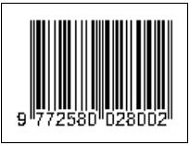PAIR-WORK FOR SPEAKING CLASS FOR FORMAL INTERACTION IN UNIVERSITY
Downloads
This article contains students' pair work interactions on developing their speaking skills in speaking class. Pairing students for their speaking practice was more effective than grouping the students. But in this study that was not always the case. There are some requirements to complete the effectiveness of pair-work interaction. Thus, to collect the data, the author observed a speaking class in one of the universities in Surabaya with the consent of the faculty and the lecturer. The collected data will be analyzed using interactive analysis techniques and was presented in a descriptive form. There were two classes that were observed with 26 students in first class and 27 students in second class. When the students present are an odd number the lecturer will make it one group with three people. The lecturer lets the students have freedom to choose their own partner. The topic that was given to the students was "Welcoming Visitor”. From the observations the task was more successfully carried out by the second class than the first class. Pairs in the first class are less active than the second class. This can be seen from when they discussed how they proceed with the assignment of this speaking class. Based on the experience of this current study it is advisable to observe pair-work activities within smaller student groups than those of the current study, as observing large-scale pairs can be overwhelming for the observer. When observing large-scale pairs it is advisable to employ more than two observers. Thus the results would yield richer information and enhanced result consistency when monitoring a class engaged in pair work.

This work is licensed under a Creative Commons Attribution-NonCommercial-ShareAlike 4.0 International License.
1. Copyright of this journal is possession of Editorial Board and Journal Manager, by the knowledge of author, whilst the moral right of the publication belongs to the author.
2. Legal formal aspect of journal publication accessibility refers to Creative Commons Atribusi-Non Commercial-ShareAlike (CC BY-NC-SA),implies that publication can be used for non-commercial purposes in its original form.
3. Every publications (printed/electronic) are open access for educational purposes, research, and library. Other that the aims mentioned above, editorial board is not responsible for copyright violation.










